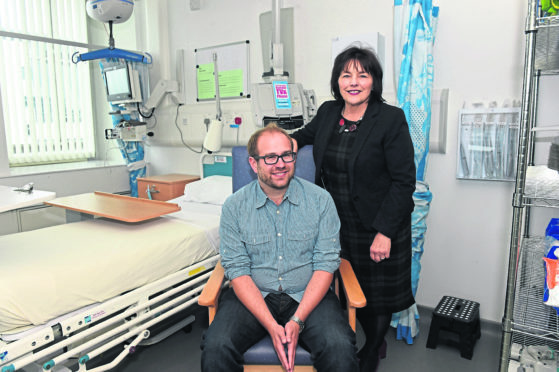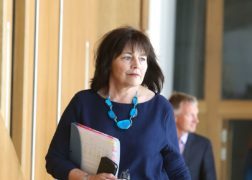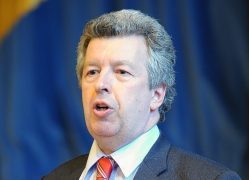The long-awaited centre is the first of its kind in Scotland, and will form part of a network with Dundee, Glasgow and Edinburgh and will initially be funded by £15.2million set aside by the government.
It is thought the trauma centre, within Aberdeen Royal Infirmary at Foresterhill, could potentially save 40 lives a year as the new streamlined approach is rolled out.
Trauma victims, including those hurt in car crashes, will now have access to a range of services, including rehabilitation and psychological experts.
And health chiefs revealed that all jobs have already been filled – piquing hope that staff will be attracted by the “sexier” roles on offer.
The rural nature of much of Aberdeenshire, Highland and Moray have also been partially blamed with younger workers in particular snubbing the areas for places with more people and facilities, and combined with the high cost of living – particularly in Aberdeen – there has been a long running problem of recruiting clinical and public sector staff.
Health Secretary Jeane Freeman acknowledged the recruitment issue as she officially opened the centre yesterday.
She said: “What’s important, beside the quality of care offered to patients, is that it offers the opportunity for clinicians and other health care professionals to work across specialisms and boundaries and geography.
“Certainly what I’ve been told here is that the posts they were creating for the centre they have had no difficulties in filling.
“There are still recruitment challenges in the north but I think the buzz of this new venture and the opportunity for the staff to increase their own skills, widen their experience and work in other ways – all that creates an atmosphere that others want to be part of.
“This marks an important day in changing trauma care in Scotland for the better.”
Anne-Marie Pitt, North of Scotland trauma network manager, said she was sure more medical professionals would be attracted to the “sexier” roles.
Dr Iain MacLeod, clinical director for the centre, said there were many options that would be attractive to medics from all fields, adding: “This collaborative way of working draws all the professionals and components together across the north of Scotland: from pre-hospital admission with the Scottish Ambulance Service to our community-based rehabilitation teams once the patient has returned home.”
Kate Burley, associate director of the Scottish Trauma Network, said: “The network has been working in collaboration with NHS boards and the Scottish Ambulance Service to enhance the services for patients with life changing or life-threatening injuries.”
North East Labour MSP Lewis Macdonald has been a vocal campaigner for the centre being located in Aberdeen.
He said: “People want to work in a major trauma centre to get those skills early in their careers so I certainly hope this will help with the recruitment problems facing NHS Grampian.”
Aberdeen Central SNP MSP Kevin Stewart added: “This is a milestone for progressive healthcare in the north-east which ensures we are fit for the future of emergency response care, and marks an exciting part of major investment in the NHS across the country.”
North-east Conservative MSP Liam Kerr added: “It has been a long time coming, and really should have been delivered two years ago, but it is great to see progress now being made.”
The scheme will have an anticipated budget of £27million by 2021/22.
NHS Grampian chairman Stephen Logan unveiled a plaque with Ms Freeman at the Suttie building on Forresterhill. The second MTC in Dundee will open on November 19, followed by Edinburgh and Glasgow by 2020/21.
Controversy
The potential siting of a major trauma centre in Aberdeen was the focus of a bitter political row at the height of Scottish parliament elections.
In 2016, controversy surrounded where the major trauma centres would be located around Scotland.
North-east Labour MSP Lewis Macdonald, who was fighting as the Labour candidate for the SNP-held Aberdeen Central seat, raised major concerns that the major central belt cities of Glasgow and Edinburgh were to be the only sites.
In 2014, then health secretary Alex Neill announced Aberdeen would be one of the four sites given major trauma centre status – but his successor Shona Robison dialled-back on the commitment, claiming senior clinicians had doubts about the viability of such a facility in the north-east.
Fears grew when the SNP manifesto only committed to ARI being part of a trauma centre “network”, prompting more than 3,500 people to sign a petition demanding the SNP keep their commitment on a major trauma centre for the Granite City.
Then, during the election campaign, First Minister Nicola Sturgeon announced exclusively to the P&J that Aberdeen would indeed be included in the network.
She said in the interview that she had “always been persuaded” of the need for the life-saving facility in the city.
>> Keep up to date with the latest news with The P&J newsletter
Mr Macdonald has since said that it was pressure from politicians and health professionals that had led to the “U-turn”.
In his concession speech after losing to the SNP’s Kevin Stewart, Mr Macdonald claimed he was glad his campaign had led to the government decision.
Last night he said: “This is a time to celebrate but there were six months between December and May when the proposal was for Glasgow and Edinburgh alone.
“That was changed after a very strong campaign from politicians and senior clinical staff during an election period when the government would be persuaded to change their minds.”
Mr Stewart said: “It was a commitment in our 2016 manifesto to create a major trauma network and that has now come to fruition with the opening today.
“The SNP Scottish government committed to this and has delivered.”


